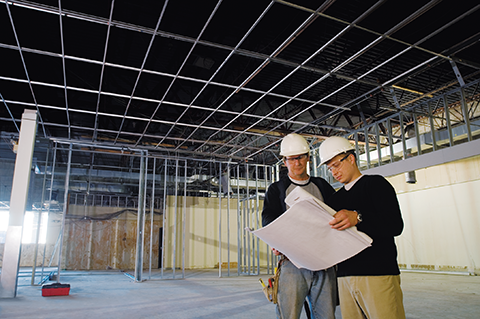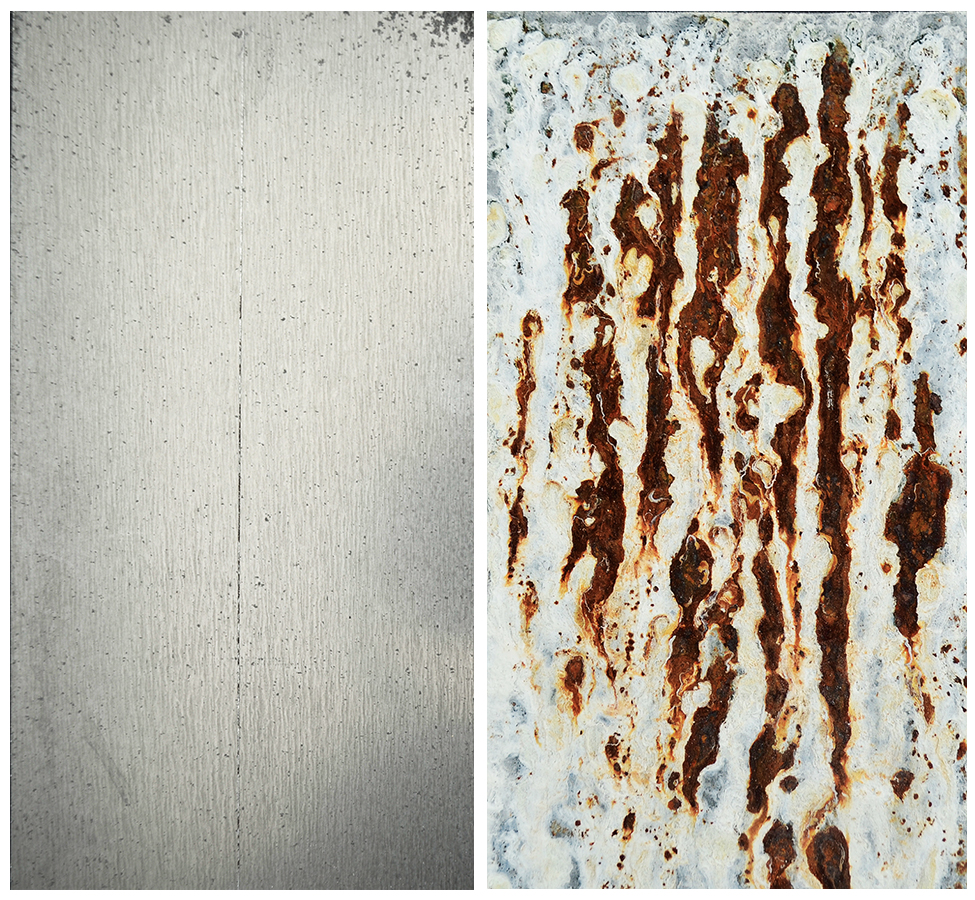
by Gregory S. Ralph
The use of high-performing materials and products has become an important strategy in the design and construction of today’s new buildings. These materials play a crucial role in a building’s efficiency, sustainability, and overall performance. Therefore, every product on the project counts, right down to the choice of the nonstructural steel studs.
Is it enough to specify ASTM C645, Standard Specification for Nonstructural Steel Framing Members, for steel studs used in nonstructural framing? ASTM C645 permits use of G40 or other protective coatings that provide equivalent or better corrosion resistance. However, steel studs with equivalent, or EQ, coatings, may actually be the better choice.
Though ‘newer’ to the construction industry, these studs have actually been used for several decades, accounting for a significant portion of the nonstructural cold-formed steel stud market, while meeting or exceeding International Building Code (IBC) requirements. Still, although many specifiers have embraced EQ coating technology, others have been slow to do so. This article explains why EQ coatings have grown in acceptance, their future, and why it matters.
Defining EQ coatings for nonstructural steel framing
EQ coatings, also sometimes referred to as organic, inter-reactive, reactive-polymer, or conversion coatings, are added to zinc-coated steel coils to enhance the corrosion resistance of the existing base coating. This additional EQ coating is applied to the already zinc-coated steel before the material is formed into metal studs. The EQ coatings are applied on a precision, digitally controlled coating line using a reverse roll coating process. The EQ-coated steel is then cured at an elevated temperature to ensure the bonding process’ completion.
These coatings are not to be confused with paints, primers, or barrier coating systems applied to the top of the zinc-coated substrate. Those three product types do not bond with the zinc-coated substrate and they may therefore allow corrosion to occur when scratched. Rather, EQ coatings protect against corrosion by permanently bonding with the existing zinc-coated substrate and penetrating into any cracks or voids in the zinc-coated substrate. The reaction between the EQ coating and base coating forms a permanent bond sealing off the zinc layer, as well as the carbon steel base metal below it, to prevent rust formation.
Much of the zinc-coated steel used by producers of steel framing products with EQ coatings consist of steel purchased, but not used by, the automotive industry. This sourcing, which helps reduce post-production waste from auto manufacturers, can contribute to Leadership in Energy and Environmental Design (LEED) credits in construction projects, such as Materials and Resources (MR) Credit 4, Recycled Content.
Additionally, use of the automotive industry’s unused steel, versus ordering steel melted specifically for nonstructural steel framing, is currently the most effective way to keep steel stud costs affordable for the construction industry. Without the addition of EQ coatings, the base coating on the automotive steel would not meet the corrosion requirements of IBC or ASTM C645. Therefore, use of EQ coatings is critical to the sustainability of post-production market for unused automotive industry purchased zinc-coated steel.
The steel framing industry is not the only industry to use EQ coatings for enhanced corrosion resistance. In fact, EQ coatings have been embraced by the transportation, military, and off-shore drilling industries. Its integration and acceptance into the manufacturing of nonstructural cold-formed steel studs has been a move toward a stronger, more sustainable future for the construction industry.

Code requirements for non-load-bearing steel studs
The durability of cold-formed steel framing is enhanced by the use of corrosion-resistant coatings. Untreated steel has a natural tendency to corrode, or oxidize, whenever exposed to the oxygen content of water or water vapor. For this reason, most structural and nonstructural steel framing is produced with protective coatings that prevent moisture from reaching the steel substrate. Acceptable coatings for steel framing members are defined by a chain of industry codes and standards. The use of EQ coatings with equivalent corrosion resistance is permitted by these codes and standards.
Specifically, IBC 2012 lists ASTM C645 as its governing industry standard for the performance of nonload-bearing steel studs. ASTM C645 draws from ASTM A653, Standard Specification for Steel Sheet, Zinc-coated (Galvanized) or Zinc-Iron Alloy-coated (Galvannealed) by the Hot-dip Process, for the coating requirement. Per ASTM C645, steel framing members must be manufactured from steel meeting the mechanical and chemical requirements of ASTM A1003, Standard Specification for Steel Sheet, Carbon, Metallic- and Nonmetallic-coated for Cold-formed Framing Members, and members shall have a protective coating conforming to ASTM A653/A653M G40 minimum, or shall have a protective coating with an “equivalent corrosion resistance.” This equivalence provision has been the standard in ASTM C645 since 1992.




